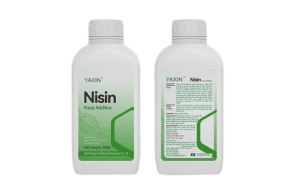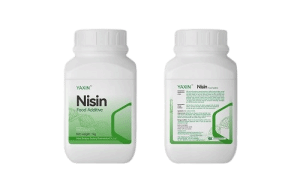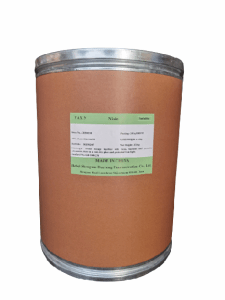
 CONTACT
CONTACT
- Linkman:Linda Yao
- Tel: +8618231198596
- Email:linda.yao@dcpharma.cn
- Linkman:CHARLES.WANG
- Department:Overseas
- Tel: 0086 0311-85537378 0086 0311-85539701
Wholesale High-quality Nisin,Food Processing
TIME:2024-10-10
In the food processing industry, the effectiveness of nisin (lacticin) can be influenced by various factors, including common ones such as temperature, pH, food composition and structure, the type and quantity of microorganisms, as well as other factors.
Nisin maintains good antibacterial activity under high-temperature treatment; however, excessively high temperatures or prolonged heating can lead to a reduction in its activity. For instance, studies show that nisin heated continuously at 121°C for 15 minutes only reduces its activity by 10% to 20%. However, at higher temperatures or longer heating times, the loss of activity may be more significant. Additionally, temperature during storage can also affect its stability. Generally, the lower the temperature, the better its activity is preserved.
The solubility of nisin is closely related to the pH of the solution. Its solubility increases in acidic environments, while it decreases in neutral or alkaline environments, where it may become nearly insoluble. Therefore, when applying nisin, the pH of the food should be considered. At lower pH levels, its antibacterial effectiveness may be enhanced. Furthermore, pH also affects its stability; for example, at a pH of 2, nisin solutions exhibit stability during high-temperature sterilization, whereas under neutral conditions, its activity may lose more than 90%.
The composition and structure of the food can also impact the application effectiveness of nisin. For example, certain macromolecules in food (such as proteins and polysaccharides) may interact with nisin, affecting its stability and antibacterial effects. Additionally, the texture and moisture content of the food may influence its application performance.
Nisin primarily inhibits Gram-positive bacteria, with relatively weak effects against Gram-negative bacteria, molds, and yeasts. Therefore, in food processing, if the target microorganisms are primarily Gram-negative bacteria or molds, its application effectiveness may be limited. The quantity of microorganisms also affects the effectiveness of nisin; the higher the microbial count, the greater the amount of nisin required.
Aside from the aforementioned factors, other influences may also affect the application of nisin. For instance, certain physical treatments during food processing (such as stirring or homogenization) may impact its distribution and stability in the food. Additionally, some chemical additives (such as antioxidants or preservatives) may interact with nisin, thereby affecting its antibacterial effectiveness.
When applying nisin in food processing, it is essential to consider a variety of influencing factors and make reasonable adjustments and optimizations based on actual conditions.
- Tel:+8618231198596
- Whatsapp:18231198596
- Chat With Skype







